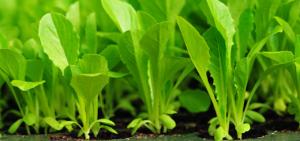Gardeners need a natural calendar to know when it’s safe to plant outdoors
March 20 is the spring equinox. Our word equinox comes from the Latin words “aequus” (equal) and “nox” (night), together meaning “equal night.” It is the true beginning of spring in the Northern Hemisphere. The equinox falls on slightly different dates each year because our Gregorian calendar defines a year as 365 days, while in fact it takes Earth 365.256 days to orbit the Sun. Those extra minutes add up, making the date change every year.
The equinox meant a lot to the Mayan people of Central America. Even though it was built thousands of years ago, people still gather today at the El Castillo pyramid every spring and fall equinox to watch a shadow show. As the sun sets, it casts a shadow that appears to be a giant snake. Remarkably, the snake shadow actually slithers down the pyramid steps until it finally rests perfectly atop the enormous sculpted serpent’s head at the bottom.
While calendars and snake shadows are fine, what gardeners need is a natural calendar that will tell us when it is safe to plant outdoors. Not just air temperature, but soil temperature is vital because winter probably froze the ground. The soil needs to be warm enough so that seeds will germinate. Also, the soil needs to dry out a bit before planting, or the seeds will rot.
When crocus bloom, you can plant the most cold-hardy crops such as radishes, parsnips and spinach. A bit later, when forsythia bursts with yellow flowers, you can safely plant lettuce, peas and onion sets. As daffodils come into full bloom, the ground will have warmed enough to plant half-hardy vegetables such as beets, carrots and Swiss chard.
Potatoes are often traditionally planted on Saint Patrick's Day, but you may want to put off planting them until you see dandelion flowers. Potatoes grow best in cooler weather and need 15-20 weeks to mature. They don't like miserably hot weather, so put them in soon enough that they get growth in before midsummer.
In the flower garden, set out perennial flower transplants just as maple trees start to leaf out. Wait until peach trees or quince are blooming to transplant broccoli and cabbage.
Apple blossom time is safe for bush beans. A bit later, once the apple blossoms fall, you can plant pole beans and cucumbers. Lilac in full bloom signals it is time to sow tender annual flowers and all squashes. Transplant sensitive tomato plants while lily-of-the-valley blooms.
When maple trees have their first full-size leaves, you can plant morning glory seeds directly in the garden. Iris in full bloom lets us know that peppers and eggplant can be safely transplanted. And finally, when peonies are in full flower, you can plant heat-loving cantaloupe and watermelons.
You can buy an inexpensive soil thermometer to test your soil, or you can wait for the shadow serpent to descend the Mayan pyramid of El Castillo. Just save some of your seeds for the off chance that there is a late killing frost.
As for the Mayans? Our term “sports fans” comes from “fanatic,” and the Mayans were no slackers for team spirit. Huge Mayan ball courts hosted games much like basketball where the victorious team not only won all of the belongings of the losing side, but the losing team was executed in a human sacrifice for the Mayan gods. That puts gambling and losing some seeds to cold soil in perspective.




















































